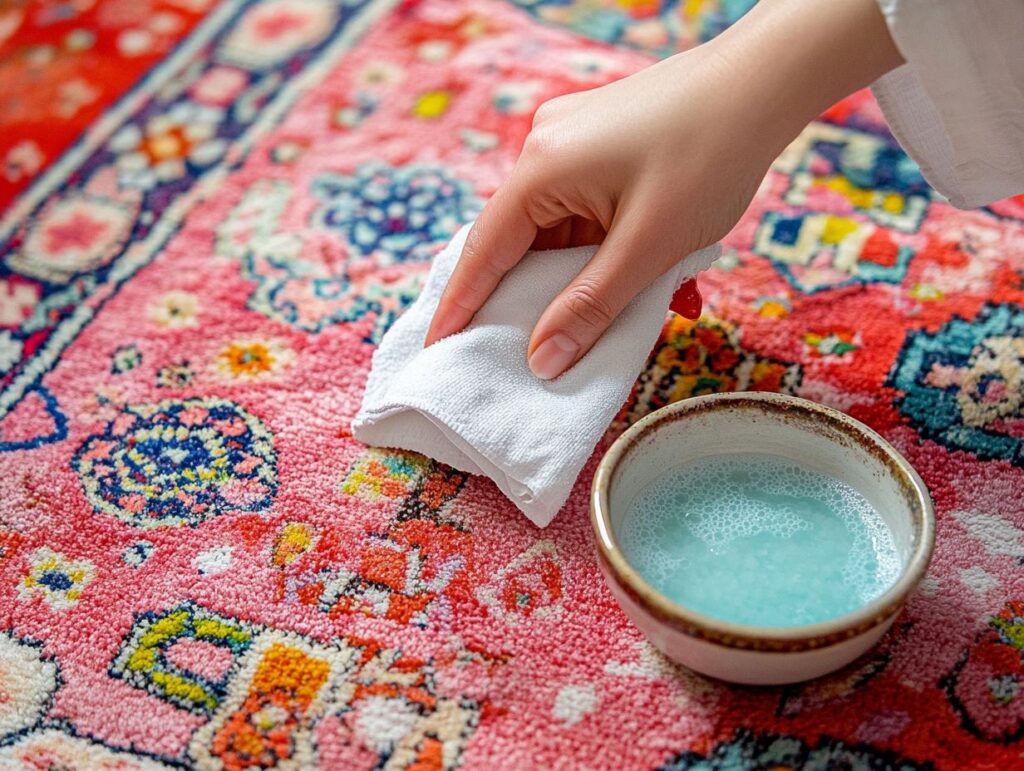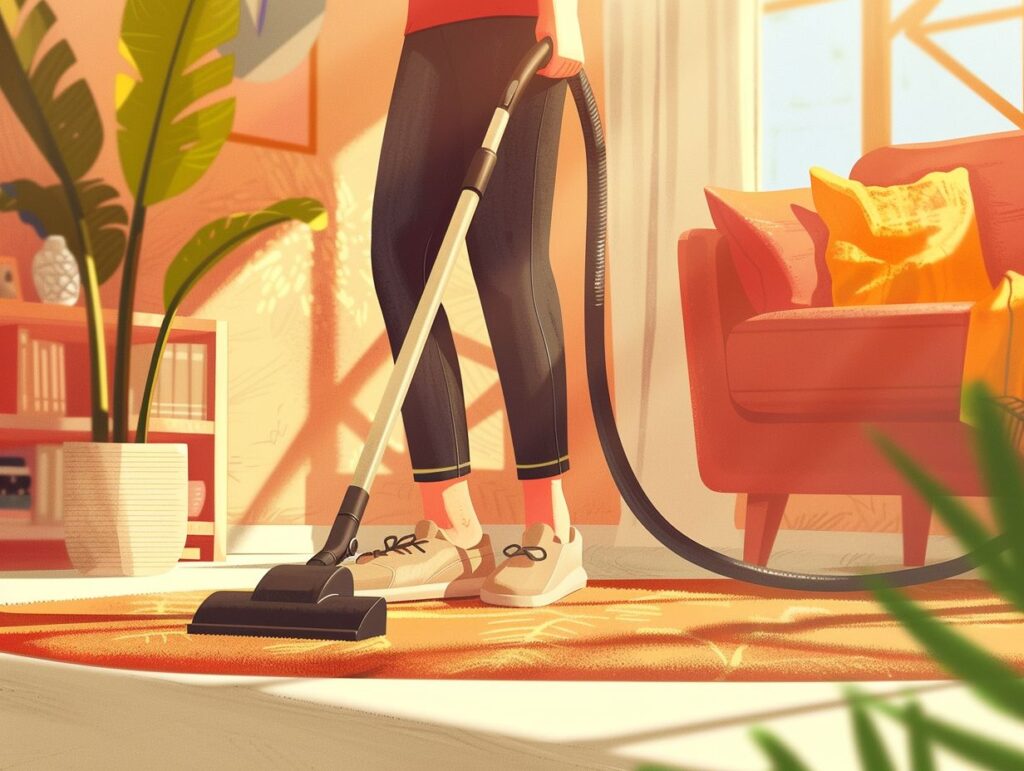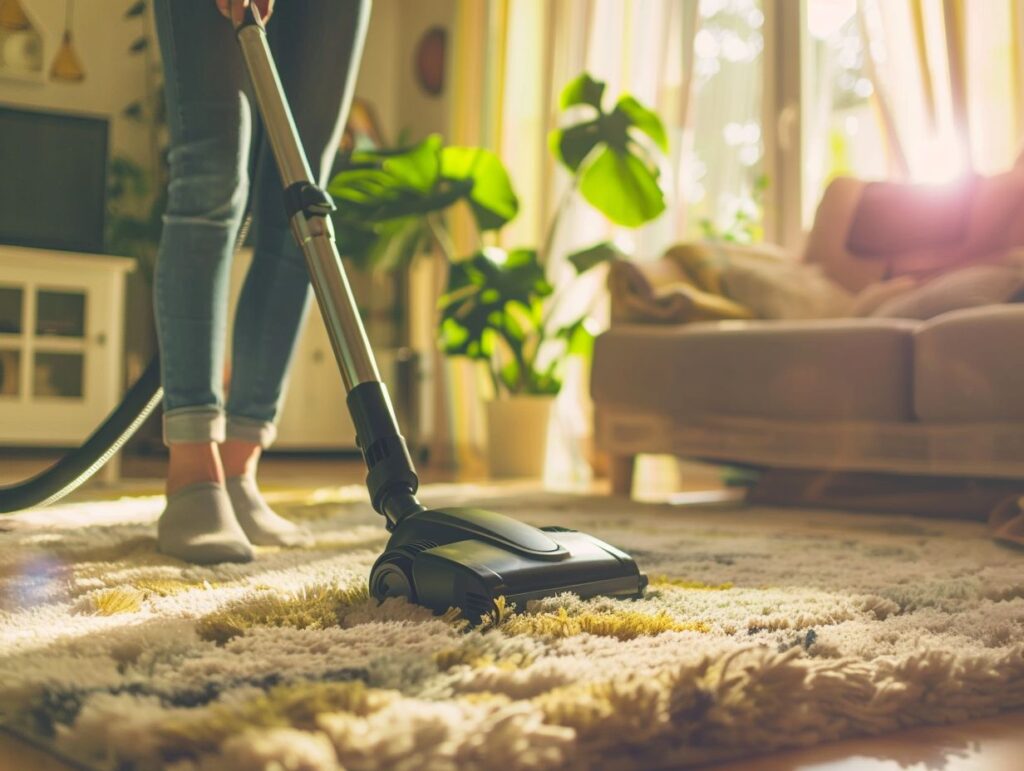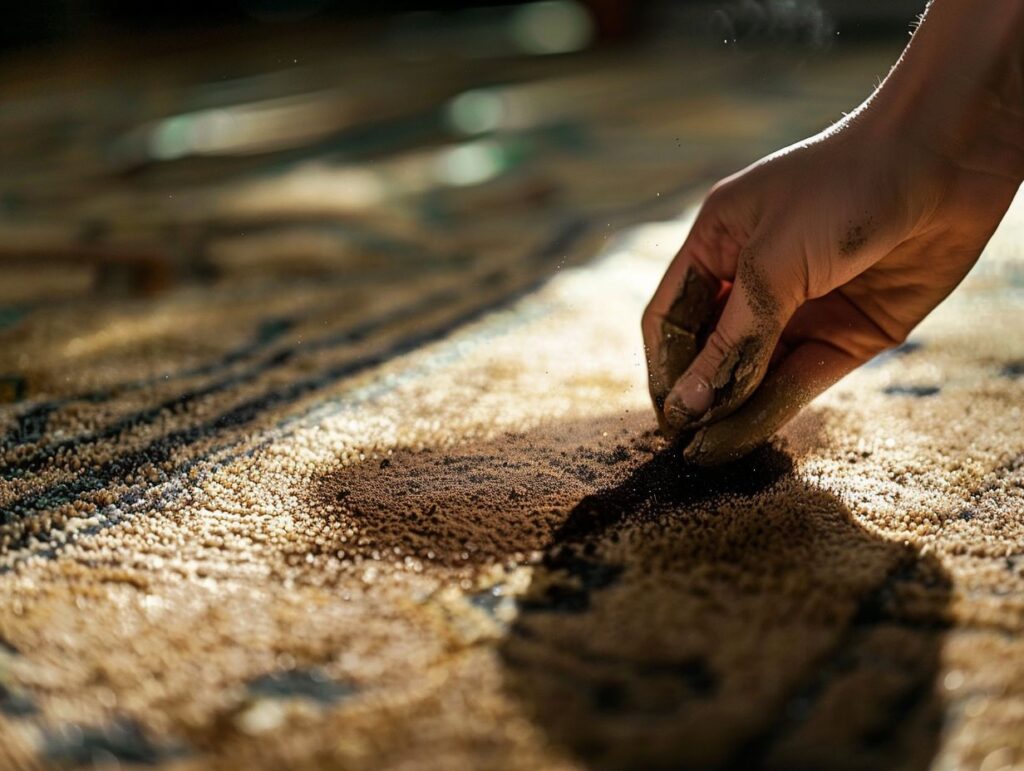Sticky candy and gum can turn a cosy carpet into a sticky mess in no time. These sugary culprits create unsightly stains and pose a challenge when it comes to removal.
This article explores how these sticky situations occur, why they’re notoriously tough to tackle and evaluates common household solutions. It also looks at professional cleaning methods, shares alternative, non-toxic DIY options, and provides tips for preventing future mishaps.

The Problem with Sticky Candy and Gum on Carpets
Sticky sweets and chewing gum can become a real headache when they end up on your carpets. Not only do they look awful, but they can also damage delicate fibres, leading to long-term problems.
As these substances are so adhesive, just vacuuming won’t suffice—you need some effective cleaning methods to remove them completely without causing further damage. Knowing how to remove sticky sweets and chewing gum properly is key to keeping your carpet looking great and lasting longer, and it can save you a great deal of hassle and money in the long run.
How It Happens and Why It’s Difficult to Remove
Understanding how sticky sweets and chewing gum end up on your carpets is the first step to getting them out for good. These pesky substances can come from children, pets, or even a little accident when food hits the floor.
Once they’re stuck, things get tricky because the adhesive properties can render traditional cleaning methods useless. You might think quick fixes are the way to go, but if you’re not careful, you could damage the fabric fibres of your carpet, leading to stubborn stains that might require a professional to handle.
It’s too easy for a moment of distraction to leave you with a colourful piece of chewing gum or a bit of melted chocolate, creating a sticky mess on your living room floor. And don’t forget about humidity—it can make those substances cling even more stubbornly to the carpet fibres.
The frustration doesn’t stop there; you might accidentally pull or fray the fibres as you try to scrub away those annoying residues. Not only does this affect how your carpet looks, but it can also lead to permanent damage. This shows how important it is to be gentle and use the proper cleaning techniques to avoid bigger problems down the line.
Common Household Solutions
When you are dealing with sticky challenges like sweets and chewing gum stuck on your carpets, don’t worry—common household solutions can often come to the rescue.
You might reach for natural cleaners lurking in your kitchen, such as vinegar and peanut butter, which are surprisingly effective at tackling sticky residues. Isopropyl alcohol, thanks to its solvent properties, is another go-to for gum removal.
Just make sure you know how to use these cleaning tips properly so you won’t create an even bigger mess while trying to get rid of that stain.
Do They Really Work?
You might wonder if those common household solutions really work against sticky challenges like gum and sweets on your carpets. The effectiveness of these cleaning methods can vary depending on the type of sticky mess and the material of your carpet.
Sure, some natural cleaners can work wonders, but they might not always deliver the results you’re hoping for—especially with stubborn stains. For example, vinegar can cut through sticky residues nicely, but its success also hinges on how colourfast your carpet is and how long that stain has been setting in.
Bicarbonate of soda is another handy option. Mixing it with water to make a paste can absorb odours and help lift stains. Gently applying it with a cloth allows maximum absorption without damaging those delicate fibres. Remember to be cautious—too much moisture can lead to mildew if your carpet doesn’t dry quickly enough.
Knowing the specific material of your carpet, whether synthetic or natural, can influence your choice of cleaning product and method. This way, you can avoid any unwarranted discolouration or damage. Always test any cleaner in a hidden spot first to ensure it won’t interfere with your carpet’s colour or texture.
Professional Carpet Cleaning Methods
If home remedies aren’t working for sticky sweets and chewing gum, it’s time to consider professional carpet cleaning methods. Professionals often use advanced techniques like steam cleaning, which penetrates deep into the carpet fibres, effectively loosening and removing those stubborn stains.
Unlike DIY solutions, professional cleaning treats your carpets with the care they deserve, maximising cleaning effectiveness while keeping the fabric intact. Plus, you’ll gain access to specialised tools and products designed specifically for tricky stain removal, offering a level of thoroughness that’s difficult to match at home.
What to Expect and How Effective They Are
When you choose professional carpet cleaning, you can expect a well-organised process that aims to deliver top-notch results.
This systematic approach uses advanced tools, such as powerful steam cleaners and industrial-grade vacuum systems, to pull out dirt and allergens stuck deep in the fibres. Furthermore, the biodegradable, eco-friendly cleaning products ensure thorough cleaning and keep your home environment safe.
By utilising techniques such as hot water extraction and low moisture cleaning, professionals can boost the effectiveness of cleaning while extending the life of your carpets. To keep them looking their best after cleaning, vacuum regularly, treat any spills immediately, and schedule occasional deep cleans.
This way, your carpets’ vibrant colours and plush feel will stay intact for years.
Alternative Methods for Removing Sticky Candy and Gum
If you’re searching for alternative ways to remove that pesky sticky sweet and gum from your carpets, you’re lucky—plenty of non-toxic solutions work wonders and keep things safe.
One popular DIY trick is to freeze the gum stuck to the carpet. Grab some ice, apply it to the area, and watch as the gum hardens. This makes it easy to scrape away without damaging those delicate carpet fibres.
You can also use other household remedies to tackle sticky situations while keeping your carpet in top condition.
Non-Toxic and DIY Solutions
Non-toxic and DIY solutions are a fantastic way to handle sticky substances without reaching for harsh chemicals. Many eco-friendly cleaning hacks use everyday items around the house, such as bicarbonate of soda and vinegar, to tackle sticky residue effectively. These DIY methods protect your carpet and are gentle on the environment, allowing you to keep your carpet looking great while following carpet care tips and being eco-conscious.
For instance, if you mix equal parts of water and white vinegar, you’ll create a powerful, non-toxic cleaner that can wipe away sticky fingerprints from surfaces and even lift stains from carpets. Spray the solution on the affected area, let it sit for a few minutes, and then blot it with a clean cloth.
If you’re dealing with tougher stains, try sprinkling some bicarbonate of soda on the stain before applying the vinegar solution. The combination works wonders to lift grime without damaging those fibres. And if you whip up a paste with bicarbonate of soda and water, you can effectively tackle stubborn, sticky residues while keeping your carpets fresh and odour-free.
Tips for Preventing Sticky Candy and Gum on Carpets
Keeping sticky sweets and chewing gum off your carpets can save you a great deal of hassle in the long run. To keep your carpets fresh, you can adopt a few simple prevention tips, such as setting up a no-food zone in certain areas of your home.
Regular carpet maintenance and spot cleaning will also help reduce the chances of lingering sticky substances, so it’s a good idea to be proactive with your cleaning routines.
How to Avoid Future Mishaps
Implement some carpet care tips and adhere to a consistent cleaning routine to avoid future mishaps with sticky sweets and gum on your carpets.
Creating a designated snack area reduces the chances of accidents. Consider using easily cleanable surfaces, such as trays or tables, for your treats—this way, spills are less likely to reach your carpets.
Educating everyone in the house about the potential mess that comes with certain foods can help foster awareness and responsibility. Furthermore, establishing a regular cleaning schedule is a sensible move; that way, you can address any accidental spills promptly and prevent long-term damage.
Taking a proactive approach keeps your carpets looking great and makes snacking much more enjoyable and stress-free when you indulge in your favourite treats.



